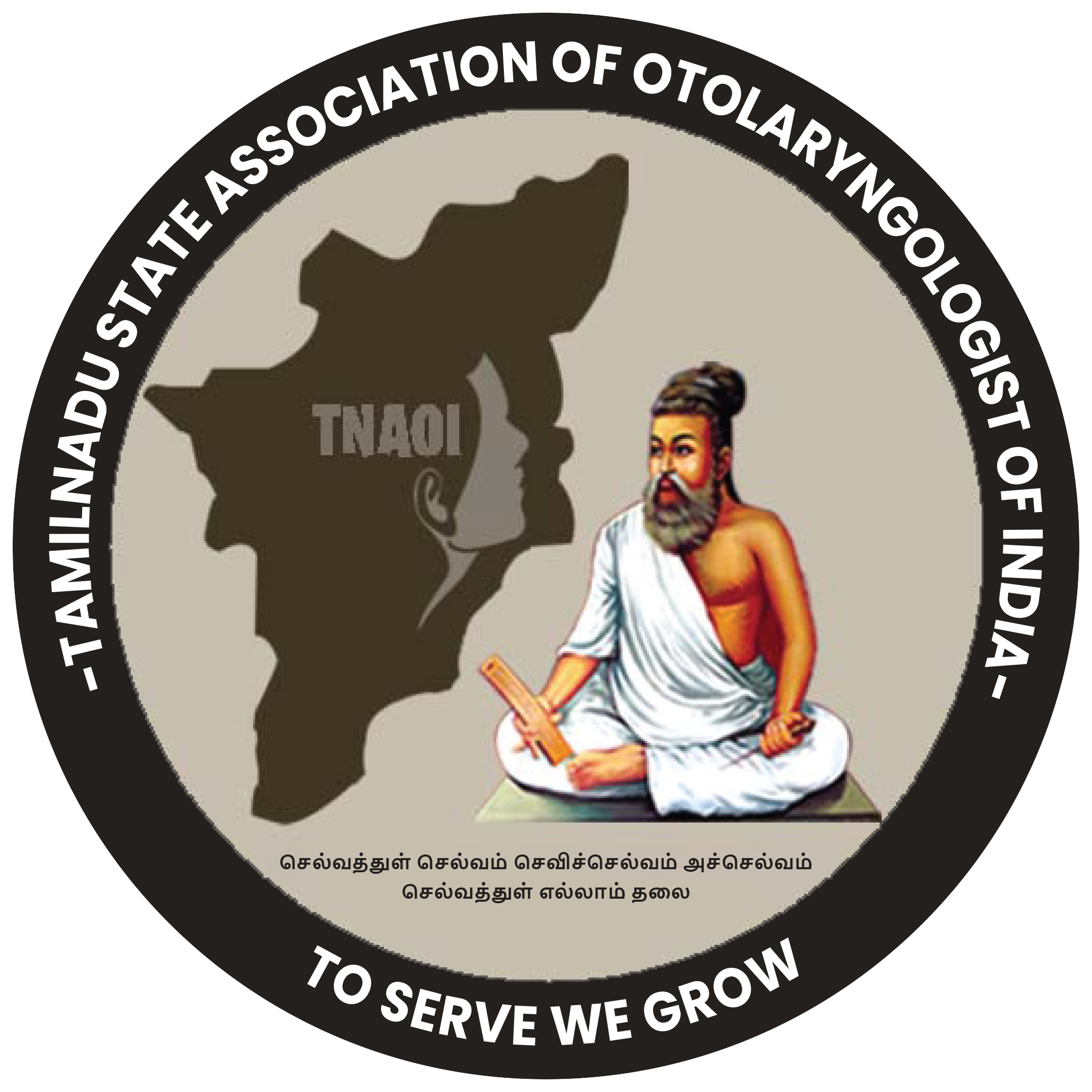
(Official Publication of the Tamil Nadu Association of Otorhinolaryngologists of India) ISSN: 3048-8524 (Online)
Editorial Workflow
The following is the editorial workflow at TNAOI Journal of Otorhinolaryngology and Head & Neck Surgery that every manuscript submitted undergoes during the course of the peer review process.
The entire editorial workflow is performed using the online manuscript tracking system. Once a manuscript is submitted for publication, the manuscript is checked by the journal's editorial office to ensure that it is suitable to go through the normal peer review process. Once this is done, the manuscript is sent to an appropriate editor based on the subject of the manuscript and the availability of the editors. All manuscripts shall be handled by an editor who does not have any potential conflict of interest with any of the manuscript's authors.
If the editor finds that the manuscript may not be of sufficient quality to go through the normal peer review process, or that the subject of the manuscript may not be appropriate for the journal's scope, the manuscript shall be rejected with no further processing.
If the editor finds that the submitted manuscript is of sufficient quality and falls within the scope of the journal, they should assign the manuscript to a two independent peer reviewers, provided that no conflict of interests exists between these reviewers and the manuscript's authors. The reviewers will then submit their reports on the manuscripts along with their recommendation of one of the following actions to the editor:
- Publish unaltered
- Consider after minor changes
- Consider after major changes
- Reject: Manuscript is flawed or not sufficiently novel
When all the reviewers have submitted their reports, the editor can make one of the following editorial recommendations:
- Publish unaltered
- Consider after minor changes
- Consider after major changes
- Reject
If the editor recommends "publish unaltered," the manuscript will undergo a final check by the journal's editorial office in order to ensure that the manuscript and its review process adhere to the journal's guidelines and policies. Once this is done, the authors will be notified of the manuscript's acceptance.
If the editor recommends "consider after minor changes," the authors are notified to prepare and submit a final copy of their manuscript with the required minor changes suggested by the reviewers. The editor reviews the revised manuscript after the minor changes have been made by the authors. Once the editor is satisfied with the final manuscript, the manuscript can be accepted.
If the editor recommends "consider after major changes," the authors are expected to revise their manuscript in accordance with that recommendation and to submit their revised manuscript in a timely manner. Once the revised manuscript is submitted, the original reviewers are asked to review it. Along with their review reports on the revised manuscript, the reviewers make a recommendation which can be "publish unaltered," "consider after minor changes," "consider after major changes," or "reject." Then, the editor can make an editorial recommendation which can be "publish unaltered," "consider after minor changes," or "reject."
If the editor recommends rejecting the manuscript, the rejection is immediate. Also, if the majority of the reviewers recommend rejecting the manuscript, the rejection is immediate.
The editorial workflow gives the editors the authority to reject any manuscript because of inappropriateness of its subject, lack of quality, or incorrectness of its results. The editor cannot assign himself/herself as an external reviewer of the manuscript. This is to ensure a high-quality, fair, and unbiased peer review process of every manuscript submitted to the journal, since any manuscript must be recommended by one or more (usually two or more) external reviewers along with the editor in charge of the manuscript in order for it to be accepted for publication in the journal.
Our peer review process ensures that only genuine research should be published.
Initial Manuscript Evaluation:First, the Editor will evaluate the manuscript. Manuscripts will be rejected at this stage if the research conducted is outside the aims and scope of the journal. The article is of very general nature without any scientific rigour, the research is poorly presented with no clarity on the methods and findings discussed and, the language is of very poor quality and contained highly plagiarised content.
The manuscripts that meet the minimum criteria are passed on to at least two experts for review.
Double blind review is adopted, where both the referees and author remain anonymous throughout the process.
The peer review process is Double blinded; that is, the reviewers don’t know who the authors of the manuscript are and the authors do not have access to the information of who the peer reviewers are. Without the significant contributions made by these researchers, the publication of the journal would not be possible.
Policies / Guidelines
Address
Madras ENT Research Foundation (P) Ltd,1st Cross Street off 2nd Main Rd, Raja Annamalai Puram, Chennai, Tamil Nadu 600028
Location
Copyright © 2024 TNAOI | Developed, Maintained and Published by Bohr Publishers
 | Publication Ethics
| Publication Ethics | Editorial Workflow
| Editorial Workflow | Article Processing
Charges
| Article Processing
Charges | Allegations of Misconduct
| Allegations of Misconduct |
Appeals
|
Appeals | Author Guidelines
| Author Guidelines | Editor Guidelines
| Editor Guidelines | Reviewer Guidelines
| Reviewer Guidelines | Peer Review Policy
| Peer Review Policy | Open Access Policy
| Open Access Policy | Plagiarism Policy
| Plagiarism Policy | Copyright
| Copyright | Privacy Policy
| Privacy Policy | Editorial Guidelines
| Editorial Guidelines | Archiving
| Archiving | Revenue Sources
| Revenue Sources